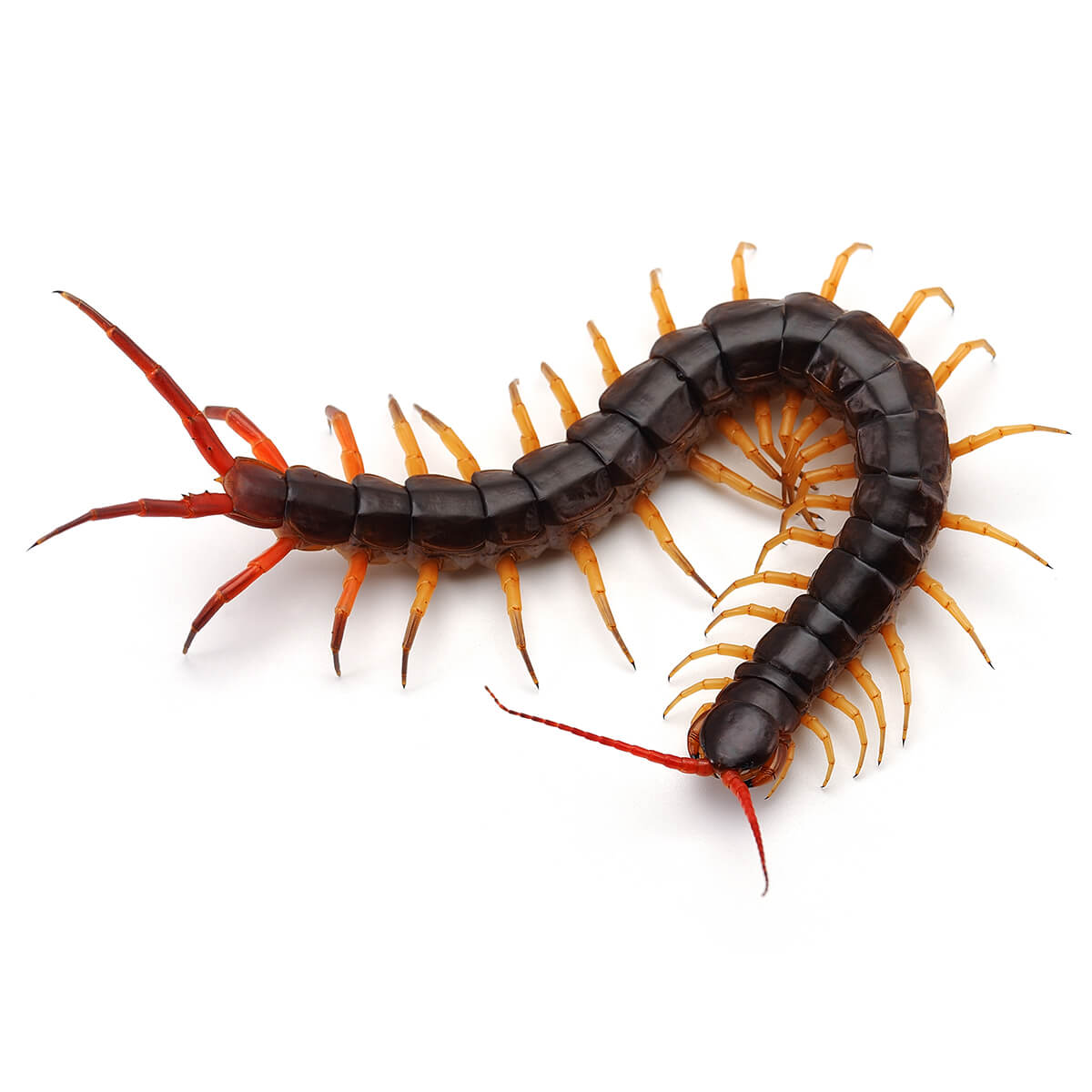Centipedes of Australia
Australia houses some of the most terrifying giant centipedes on the planet. They look like they could crawl anywhere and start biting, which doesn’t help much with their reputation (though the absolute champion in this department are earwigs). Let’s delve a bit deeper into the anatomy of these fascinating chilopods.
Anatomical characteristics

Centipedes usually have flattened heads (like someone has stepped on them). They also have antennae in the front part used for orientation.
Like other myriapods, centipedes leverage their many legs and sometimes use them to hold down their potential dinner.
The antennae and front and back legs are used for orientation based on vibrations due to the lack of seeing eyes. In most species, even if there are organs that look like eyes, they primarily function to tell light from dark. This is an essential survival mechanism because centipedes thrive in the dark.
The centipede is the only arthropod that has its legs as a natural extension and modification of its mouth. This is where their venom glands are located. Their first pair of legs is not an actual mouthpart. They function a bit differently, which makes centipedes unique in this respect.
The body of a centipede is divided into segments. This is what helps them to be so flexible, hide from predators, as well as hunt down prey. Their antennae are finely attuned to seek out smaller insects.
Read also about: The Millipedes of Australia
Lifecycle of a centipede
The lifecycle of a centipede begins as an egg. To lay the eggs, the female needs warmer and more humid weather, which is why there can be some seasonality in some regions, and they might be completely absent in others. Yet, you can find a wealth of centipedes in warm and humid climates.
A single female of the species Geophilomorpha lays between 20 and 50 eggs, and usually under rotten tree trunks or in rotten wood. This provides a perfect and safe environment for the development of nymphs. Other species dig holes in the ground and bury them with leaves. So if you have centipedes at home, the most likely place to find them would be the basement, where it’s dark and humid (provided the temperature is not too low).
The hatchlings resemble adults, only they are smaller and develop more segments and more legs as they mature.
Learn about: The Life Cycle of Bed Bugs
What do centipedes eat
As predators, centipedes eat smaller insects. They can actually be pretty beneficial as a natural form of pest control for some common household pests. Some species hunt during the day, though.
Because they are predominantly nocturnal, this somewhat limits their usefulness, and at the same time, they can provide a decent scare in the middle of the night.
Mice, mongoose, some reptiles, and birds often prey on centipedes, especially if they catch them during the day.
Humans also prey on them sometimes. They are quite the delicacy in China, Laos, and Cambodia.
Curious about: What Do Ants Eat?
How do centipedes reproduce
Centipede reproduction is interesting in the sense that it can vary from species to species. In all cases, it does not involve actual copulation but rather the use of a spermatophore. However, in some species, the male encourages the female by performing a dance, wherein in other species, he throws it out for her to find.
The home centipede
The home centipede has pretty consistent behaviour with those you can find in the wild. They hunt smaller insects but mostly go for those that can pose little threat to them. Their antennae are extremely sophisticated and sensitive. Home centipedes come out mostly at night, so you might not even know if you have a problem with them.
Due to their venom, some species can pose a threat to humans. In most cases, centipede venom is not potent enough to cause more than a small redding and an unpleasant sting, but some species can cause complications.
Pest control treatment for centipedes
There isn’t special centipede pest control. Once you schedule a visit from a pest controller, they’ll come, evaluate your case and conduct general pest control with proper pest control sprays.